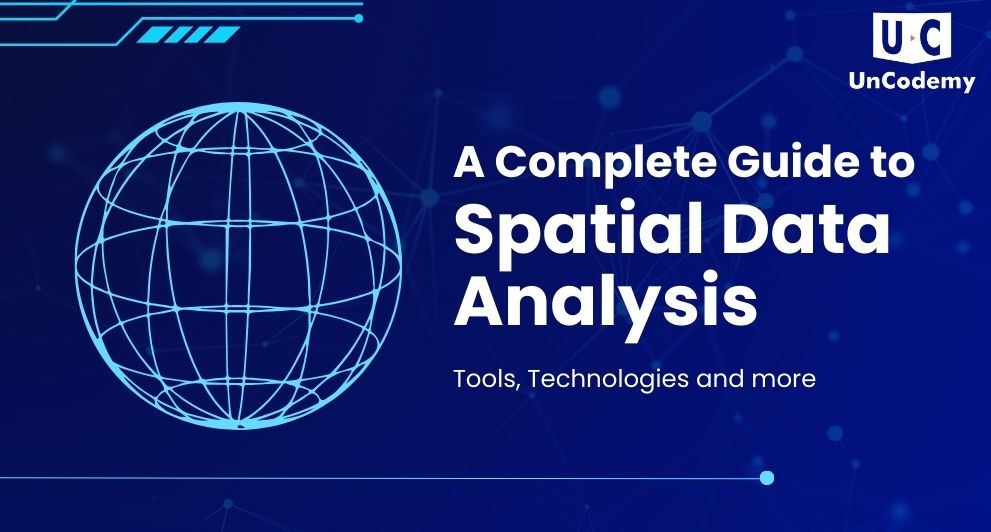A Comprehensive Guide to Splunk Architecture: Key Components and Best Practices



Spatial data analysis is a powerful field of study that combines data science, geography, and statistics to examine patterns, relationships, and phenomena across geographic locations. Whether it’s mapping the spread of diseases, analyzing urban growth, or studying environmental changes, spatial data analysis plays a crucial role in understanding the world around us. With the growing availability of geographic information systems (GIS) and spatial data, professionals in fields like urban planning, epidemiology, environmental science, and transportation increasingly rely on spatial data analysis to make informed decisions. This blog post will explore the importance, techniques, tools, and applications of spatial data analysis.
Spatial data analysis refers to the process of examining and interpreting data that has a geographic or spatial component. This type of analysis involves studying the relationships between different variables or features that exist in specific locations or regions. The goal is to uncover spatial patterns, identify trends, and make predictions or decisions based on the geographic distribution of the data.
Spatial data can take many forms, including:
Spatial data analysis has become increasingly important in numerous fields due to its ability to reveal critical insights and improve decision-making. Here are some of the primary reasons why spatial data analysis is crucial:
Spatial data analysis is an essential tool in modern decision-making, allowing us to understand and respond to geographic patterns and relationships. Whether in urban planning, environmental conservation, public health, or transportation, spatial data analysis offers invaluable insights that drive more informed, data-driven decisions. With the advancements in technology and the availability of sophisticated tools, the potential for spatial data analysis is only continuing to grow. As more industries embrace geospatial data, the demand for skilled professionals who can interpret and analyze spatial data will undoubtedly rise, opening up numerous opportunities for research, innovation, and problem-solving.
Spatial data analysis involves examining geographic or spatial data to uncover patterns, relationships, and trends. This includes using mathematical and statistical techniques to analyze locations, distances, and spatial distributions.
It is crucial for decision-making in fields like urban planning, environmental science, agriculture, and public health. It helps in understanding spatial patterns, optimizing resources, and predicting future trends.
Common techniques include spatial autocorrelation, kriging (interpolation), spatial regression, hotspot analysis, spatial clustering, and geographic information system (GIS) modeling.
Popular tools include GIS software like ArcGIS and QGIS, statistical tools such as R and Python (with libraries like GeoPandas and PySAL), and specialized platforms like Google Earth Engine and GeoDa.
Unlike traditional data analysis, spatial data analysis considers the location and relationships between data points in a geographic context, accounting for spatial dependencies and proximity effects.
Spatial data typically includes geographic information such as coordinates (latitude, longitude), maps, satellite imagery, and spatial features like roads, land use, and environmental variables.
Spatial autocorrelation measures the degree to which a spatial variable correlates with itself in a given region. High autocorrelation suggests that nearby locations have similar values, whereas low autocorrelation indicates more variation between nearby points.
Kriging is a geostatistical method used for spatial interpolation to predict unknown values at certain locations based on known data from surrounding areas. It is widely used in environmental science, agriculture, and natural resource management.
Yes, it can help urban planners by analyzing land use patterns, traffic flow, pollution distribution, and the impact of new developments, leading to better decisions about zoning, infrastructure, and public services.
Some challenges include data quality issues (such as incomplete or inaccurate spatial data), spatial scale mismatches, high computational demands, and difficulties in interpreting complex spatial patterns.
Personalized learning paths with interactive materials and progress tracking for optimal learning experience.
Explore LMSCreate professional, ATS-optimized resumes tailored for tech roles with intelligent suggestions.
Build ResumeDetailed analysis of how your resume performs in Applicant Tracking Systems with actionable insights.
Check ResumeAI analyzes your code for efficiency, best practices, and bugs with instant feedback.
Try Code ReviewPractice coding in 20+ languages with our cloud-based compiler that works on any device.
Start Coding TRENDING
TRENDING BESTSELLER
BESTSELLER BESTSELLER
BESTSELLER TRENDING
TRENDING HOT
HOT BESTSELLER
BESTSELLER HOT
HOT BESTSELLER
BESTSELLER BESTSELLER
BESTSELLER HOT
HOT POPULAR
POPULAR